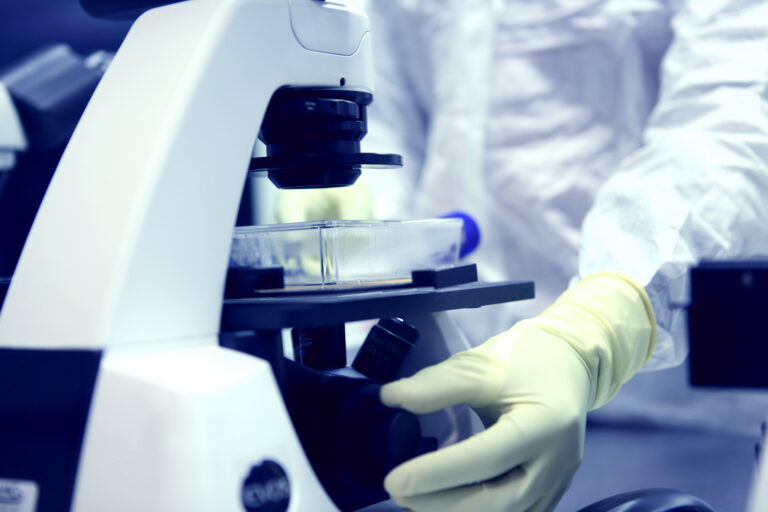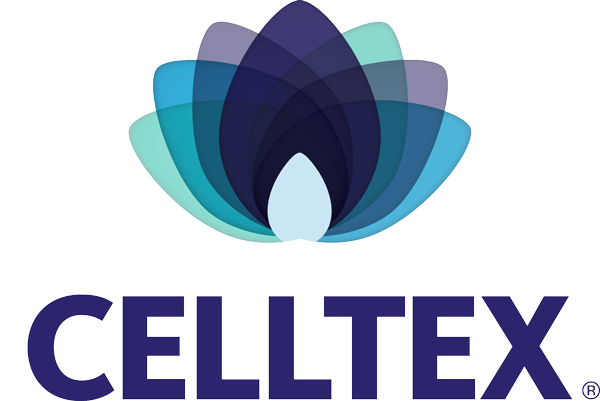Celltex News
The Importance of Quantity in Stem Cell Therapy

One of the main advantages of Adult Stem Cell Banking with Celltex is that it gives you access to your body’s own Mesenchymal Stem Cells (MSCs) at quantities exponentially greater than what you’d receive through many of the regenerative medicine options currently out there.
But when it comes to Mesenchymal Stem Cell (MSC) therapy, how much of a difference does quantity make?
We’ve mentioned the potential benefits of larger stem cell doses in previous articles, but today we’re diving deeper into what the research is saying about high-dose MSC therapy.
What Is Mesenchymal Stem Cell (MSC) Therapy?
Mesenchymal Stem Cells, or MSCs, are the stars of the show here at Celltex. Like other types of stem cells, they possess the remarkable ability to differentiate into various specialized cell types, making them valuable for promoting tissue repair.
However, one of the qualities that truly sets MSCs apart is their exceptional immunomodulating properties. These properties make them, in the words of Celltex Chief Medical Officer Dr. Stanley C. Jones, “one of the most powerful anti-inflammatories there is.”
In simple terms, MSCs have the potential to reduce inflammation by inhibiting the appearance and activation of the specific immune cells responsible for the inflammatory process. This characteristic makes MSC therapy a promising avenue for conditions like osteoarthritis, rheumatoid arthritis, multiple sclerosis, and other conditions where inflammation plays a role.
Same-Day Stem Cell Therapy vs. High-Dose Stem Cell Therapy
You’ve probably seen us use the term “Same-day stem cell therapy” before, but what is same-day stem cell therapy and how is it different from therapies that utilize a stem cell bank?
Same-day MSC therapy is a form of stem cell therapy that opts to skip the banking process by extracting and re-administering an individual’s own stem cells in a single procedure.
A physician first extracts some of the patient’s tissue—typically either adipose (fat) tissue or bone marrow—that contains stem cells. The stem cells are then isolated from the tissue sample and administered to the part of the patient’s body affected by injury or disease. The tissue extraction, isolation process, and administration procedure all occur within the same day.
Because same-day therapies skip the banking process, the patient’s stem cells aren’t given a chance to grow in quantity before being administered back into their body.
While same-day procedures can potentially be helpful for certain mild cases, they typically only offer doses in the tens of thousands. That’s nowhere near the number of stem cells that may be recommended for chronic conditions, lingering injuries, and other more severe cases.
With Adult Stem Cell Banking, Celltex can multiply your stem cells into the hundreds of millions—creating the potential for unparalleled applications.
You can read more about the applications of high-dose MSC therapy here.
The Case for Larger Stem Cell Quantities
Now, let’s turn our attention to the core question: does the quantity of stem cells administered during MSC therapy matter?
Several clinical studies have looked into the positive effects that large doses of MSCs may provide compared to smaller doses.
It’s important to remember that, while MSC research has come a long way in the last few decades, there’s still plenty of research to be done on the topic. While the studies we discuss in the article may lean strongly towards one conclusion, there’s still more work to be done before we know anything for certain.
With that said, let’s take a look at some of the research.
Jo et al. observed better outcomes from a dose of 100 million MSCs, as compared to lower doses.1
In their 2014 study, the researchers analyzed the results of varying MSC quantities on three different groups of individuals with osteoarthritis of the knee. Autologous adipose-derived MSCs were injected intraarticularly for every group.
Each group received varying quantities of MSCs:
- The first group received a dose of 100 million MSCs.
- The second group received a dose of 50 million MSCs.
- The third group received a dose of 10 million MSCs.
The group who received 100 million MSCs saw more improvements in pain and function than those who received either 10 or 50 million MSCs. Histology even revealed cartilage regeneration among the 100 million group.
Lamo-Espinosa et al. demonstrated that a dose of 100 million MSCs showed more favorable outcomes than a smaller dose of MSCs or a hyaluronic acid injection. 2
In their 2016 study, this team of researchers analyzed the results of three varying treatment methods on three randomized groups of individuals with osteoarthritis of the knee:
- The first group received a single intraarticular injection of 100 million autologous bone marrow-derived MSC, followed by a hyaluronic acid injection.
- The second group received a single intraarticular injection of only 10 million autologous bone marrow-derived MSC, also followed by a hyaluronic acid injection.
- The third group served as the control group and received only a hyaluronic acid injection.
Both groups receiving MSCs demonstrated improvements in pain, function, and MRI analysis. However, it was the 100 million group that saw the greatest improvements.
Via MRI analysis, Zhao et al. noticed improvements in cartilage health among the group receiving the largest quantity of MSCs. 3
In their 2019 study, the researchers compared the results of varying MSC quantities on three different groups of individuals with osteoarthritis of the knee. Allogeneic adipose-derived MSCs were injected intraarticularly for every group.
Each group received varying quantities of MSCs:
- The first group received a dose of 50 million MSCs.
- The second group received a dose of 20 million MSCs.
- The third group received a dose of 10 million MSCs.
Interestingly, the 50 million group exhibited the most significant MRI improvements of the three groups 6 months after receiving MSC therapy.
Beyond these external studies, Celltex has collected data based on the results of our clients.
Celltex’s Client-Reported Outcomes
If you’ve seen any of our previous research-focused articles, we often like to include data from our client-reported outcomes to provide further context for the topic at hand.
Based on Celltex’s collection of client-reported results:
- 81% of clients with osteoarthritis of the knee indicated improvement in one or more symptoms. 4
- 83% of clients with osteoarthritis of the shoulder indicated improvement in one or more symptoms. 5
- 100% of clients with inflammatory forms of arthritis indicated improvement in one or more symptoms. 6
- 79% of clients with multiple sclerosis indicated improvement in one or more symptoms. 7
- 81% of clients with Parkinson’s disease indicated improvement in one or more symptoms.8
Depending on a physician’s recommendation, for most of these clients, their MSCs were administered in quantities of 200 million at a time. It’s these high quantities that separate Celltex’s Adult Stem Cell Banking process from other offerings.
The evidence from clinical studies and our own client-reported outcomes suggests that when it comes to Mesenchymal Stem Cell therapy, larger stem cell doses may indeed offer superior benefits. While more research is needed to refine dosing guidelines, these findings underscore the significant potential of high-dose MSC therapy for a wide range of conditions.
At Celltex, we remain committed to pushing the boundaries of regenerative medicine. Whether you’re considering stem cell therapy for joint pain, autoimmune disorders, or other health concerns, the dosage of MSCs you receive may play a crucial role in your journey toward better health.
You can read more about Celltex’s client-reported results, and even download our condition-specific study overview reports, here.
To learn more about stem cell banking and what makes Celltex’s process so unique, visit celltexbank.com/difference.
References:
- Jo, C. H., Lee, Y. G., Shin, W. H., Kim, H., Chai, J. W., Jeong, E. C., Kim, J. E., Shim, H., Shin, J. S., Shin, I. S., Ra, J. C., Oh, S., & Yoon, K. S. (2014). Intra-articular injection of mesenchymal stem cells for the treatment of osteoarthritis of the knee: a proof-of-concept clinical trial. Stem cells (Dayton, Ohio), 32(5), 1254–1266. https://doi.org/10.1002/stem.1634
- Lamo-Espinosa, J. M., Mora, G., Blanco, J. F., Granero-Moltó, F., Nuñez-Córdoba, J. M., Sánchez-Echenique, C., Bondía, J. M., Aquerreta, J. D., Andreu, E. J., Ornilla, E., Villarón, E. M., Valentí-Azcárate, A., Sánchez-Guijo, F., Del Cañizo, M. C., Valentí-Nin, J. R., & Prósper, F. (2016). Intra-articular injection of two different doses of autologous bone marrow mesenchymal stem cells versus hyaluronic acid in the treatment of knee osteoarthritis: multicenter randomized controlled clinical trial (phase I/II). Journal of translational medicine, 14(1), 246. https://doi.org/10.1186/s12967-016-0998-2
- Zhao, X., Ruan, J., Tang, H., Li, J., Shi, Y., Li, M., Li, S., Xu, C., Lu, Q., & Dai, C. (2019). Multi-compositional MRI evaluation of repair cartilage in knee osteoarthritis with treatment of allogeneic human adipose-derived mesenchymal progenitor cells. Stem cell research & therapy, 10(1), 308. https://doi.org/10.1186/s13287-019-1406-7
- Young, J., Rhodes, M. Safety of Autologous Adipose-Derived Mesenchymal Stem Cells in OA of the Knee.
- Young, J., Rhodes, M. Safety of Autologous Adipose-Derived Mesenchymal Stem Cells in OA of the Shoulder.
- Young, J., Rhodes, M. Surveys of Patients with Inflammatory Arthritis Treated with Autologous Mesenchymal Stem Cells, 2021 Update.
- Young, J., Rhodes, M. Retrospective Surveys of Multiple Sclerosis Patients Receiving Autologous Mesenchymal Stem Cell Therapy, 2016.
- Young, J., Rhodes, M. Safety Registry Study Series using Autologous Adipose-Derived Mesenchymal Stem Cells, Parkinson’s Disease, 2021.
About Celltex
Celltex Therapeutics Corporation is an international leader in cryopreservation, or banking, and culturing of autologous, adipose-derived Mesenchymal Stem Cells (MSCs) for therapeutic use and has remained committed to improving and maintaining clients’ quality of life. Celltex has the unique ability to do what no one else can: isolate, expand and cryopreserve your own MSCs to create your master cell bank, all from one small sample of your adipose tissue. This bank of MSCs can then be used to produce hundreds of millions of clinical-grade, genetically stable MSCs that are available for therapeutic use. To learn more about Celltex, visit www.celltexbank.com
Post Tags: adult stem cell therapy, arthritis, medical research, Orthopedics, pain relief, stem cell therapy
More Recent News
Exploring Regenerative Medicine Beyond Stem Cell Therapy
For many, stem cell therapy is to regenerative medicine what Google is to internet searches. Yet, there are other procedures within the regenerative medicine field that may be recommended depending on the health concern being addressed.
In this article, we explore several regenerative medicine options, including platelet-rich plasma (PRP), bone marrow aspirate concentrate (BMAC), stromal vascular fraction (SVF), and exosomes.
Read MoreWhat Makes MSCs So Promising? A Deep Dive on Mesenchymal Stem Cells
Present in the body throughout one’s lifespan, adult Mesenchymal Stem Cells (MSCs) can be used in many types of regenerative medicine. This article explores how MSCs work in the body and what makes them suitable for therapeutic application.
Read More
